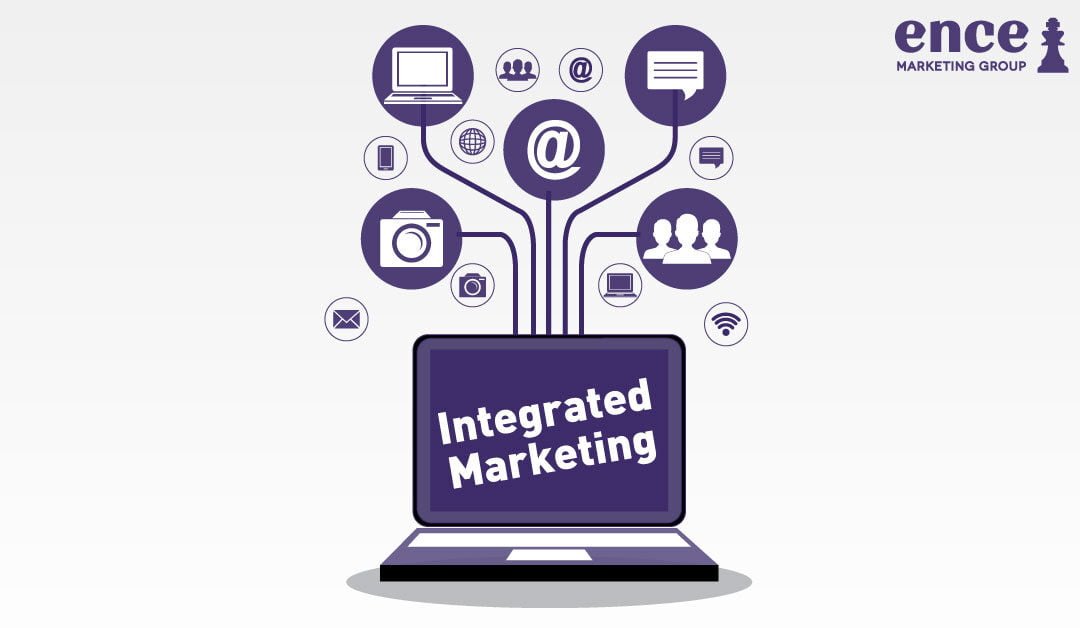Have you heard of the term “Integrated Marketing”? If you are not really sure what it means, should you be worried?
The digital era has heralded new tools, new platforms and new digital marketing tactics that probably did not even exist 5 years ago. Integrated Marketing emerged in the 1990s as a new discipline in the advertising industry. Today, despite the dizzying mix of marketing strategies that include content marketing, direct mail marketing, influencer marketing, social media marketing and experiential marketing, the essence of Integrated Marketing is still unchanged – to communicate the same message to an audience.
True success lies in integrating your marketing strategies across platforms to help you convey the message more effectively through multiple channels.
Here are 7 Integrated Marketing tips to help amplify your brand message:
1. Keep your messaging consistent across all platforms
Consistency is the first and most important rule for creating an integrated online/offline marketing strategy. Your brand must represent itself consistently to build consumer recognition and trust. Consistent messaging allows customers to get to know your business and the message you’re sharing. Customers can’t trust your business if they don’t have the opportunity to experience your brand in a consistent manner. Here are three ways that consistent branding will strengthen your business:
- Easy brand recognition leads to positive association
- Consistency provides an advantage over the competition
- Increased perceived value leads to higher sales
Customers want an experience that they can depend on, this means offering the same promotions across multiple channels. Using consistent branding includes your business name, logo, colours, and language so that they can recognise your business. The easiest way to blend your online and offline marketing is to be consistent across all of your platforms.
2. Engage in teaser advertising
Curiosity is powerful. People enjoy the experience of being intrigued in entertaining ways. People want to know everything, and teaser campaigns take advantage of this. The obvious path for a teaser campaign is offline to online. Drop the teaser online and then direct your audience to your website. If you are planning an event, tease your event online through your social media channels or an exclusive email campaign to motivate customers to attend it. If you are offering a special flash sale, tease that online so that shoppers are primed to jump into action when the opportunity presents itself. Just be creative and you will find all sorts of ways to use curiosity to drive your consumers from one platform to the next.
3. Reincarnate your content marketing
Amplify and integrate your online and offline efforts by recycling your content on multiple platforms. Create an infographic, post a short quote with a link to the full article on social media, like Instagram, Snapchat, Facebook, and Twitter. Don’t stop with online platforms. Pitch your content to publications that your audience wants to read. Maximise your return on the investing time and effort to develop content. You will build trust and recognition as an expert in your field.
4. Get personal in your customers mailboxes
By personalising URLs, you can help create trackable, customised interactions with your customers. A targeted and personalised page has a greater chance of success that throwing one message out and hoping that it appeals to everyone. If you want to integrate your online and offline marketing, reaching out via direct mail is a fantastic blend of old and new marketing techniques.
5. Bring offline events online
Create offline marketing events that consumers will truly want to experience; these offline events can reach a greater audience if you bring them online as well. You can advertise your event online to your local social media followers. You can send them email invitations from your mailing list. Give a reason to tune in through live stream. Offer discounts to customers who watch online and comment on social media. Share real-time photos from an event on social media. There are so many creative ways to bring offline event online. Make use of it!
6. Build a mobile app
Smartphones are a powerful tool for marketing. You could build an app designed specifically for your medium. Consumers nowadays value convenience and ease of use. It’s more convenient if they can access everything, they might need from your business in one well designed mobile application. Make use of this fantastic mobile tool to bridge your online and offline marketing as consumers carry it with them wherever they go.
7. K.I.S.S.
Keep it simple stupid! Use your physical marketing collateral and store space to direct guests to your online efforts. Use signage to refer your guests to your online platforms of choice. If you have an undecided shopper, give them a flyer to an online discount to take with them when they leave. Ask satisfied clients or customers to leave a positive review for you. Integrating your marketing doesn’t have to be hard. Make it easy for your consumers to find you online by sharing your website and social media.
Strategise and prioritise the marketing channels that are most valuable to your business. These channels are where your actual customers are. Everyone should aim to keep their marketing consistent across all channels. Remember that integrated marketing strategy drives consumers to engage and convert both online and offline will serve your business best.


